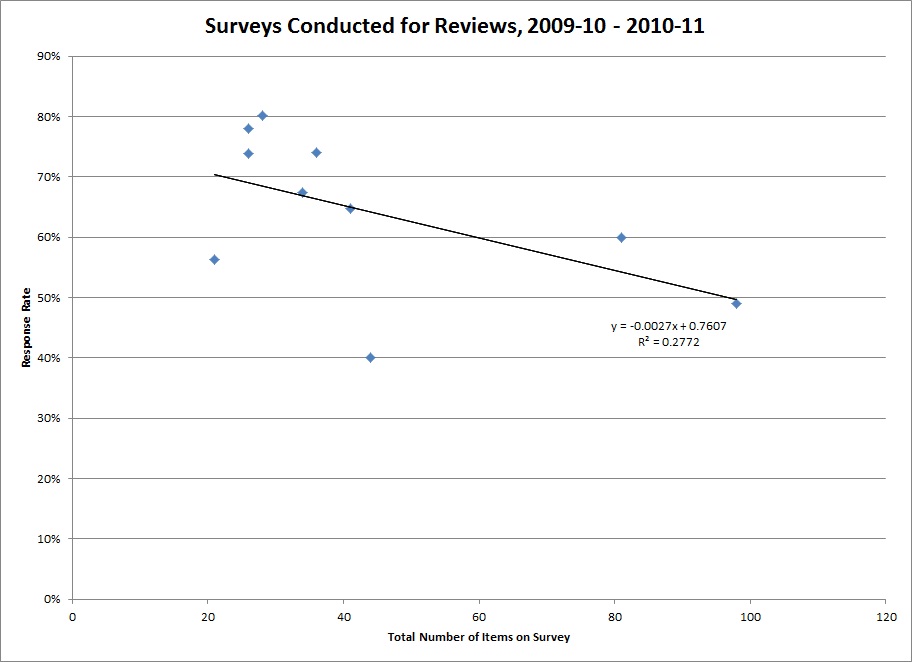 A number of admissions guide publishers have released rankings recently, and the Godzilla of them all, US News, will be coming out shortly. It’s always an interesting time for Institutional Researchers. We spend a lot of time between about November and June each year responding to thousands (I’m not kidding) of questions from these publishers, and then in late summer and early fall we get to see what amazing tricks they perform with this information, what other sources of “information” they find to spice up their product, and the many ways they slice and dice our institutions.
A number of admissions guide publishers have released rankings recently, and the Godzilla of them all, US News, will be coming out shortly. It’s always an interesting time for Institutional Researchers. We spend a lot of time between about November and June each year responding to thousands (I’m not kidding) of questions from these publishers, and then in late summer and early fall we get to see what amazing tricks they perform with this information, what other sources of “information” they find to spice up their product, and the many ways they slice and dice our institutions.
The time spent on their surveys is probably the most frustrating aspect of IR work. (Not all IR offices have this responsibility, but many do.) We are deeply committed to providing accurate information about the institution to those who need it. But so often guidebook questions are poorly constructed or not applicable, and the way they interpret and use the data can be bizarre. While publishers may truly believe that they are fulfilling a mission to serve the public by providing their synthesis of what admittedly is confusing data, there is no misunderstanding that selling products (guides, magazines) is their ultimate purpose. Meanwhile, we are painfully aware of the important work that we were not able to do on behalf of our institutions because of the time we spent responding to their surveys.
So the rankings come out, alumni ask questions, administrators debate the methodology and the merit, newspapers get something juicy to write about, and then we all go back and do it all over again. Some of my colleagues get really worked up about this, and I can understand that. But maybe I’m just getting too old to expend energy where it does no good. It seems to me like complaining about the weather. It is what it is. You do the best you can – carry an umbrella, get out your snow shovel, hibernate – and get on with life. Don’t get me wrong – I believe we should engage in criticism, conversation, and even collaboration if appropriate. I just don’t think we should get ulcers over it.
<Minor Rant>That said, I do think it’s especially shameful for publishers to lead prospective students to think that “measures” such as the salaries volunteered by a tiny fraction of alumni on PayScale.com will be useful in their search for a college that’s right for them.</Minor Rant>
I think we have to acknowledge that there has been some good from all this. There was a time when some institutions spun their numbers shamelessly (I know of one that reported the average SAT of those in the top quartile), and the increased scrutiny of rankings led to some embarrassment and some re-thinking about what is right. It also led to a collaborative effort, the Common Data Set, in which the higher education and the publishing communities agreed on a single methodology and definitions to request and report some of the most common data that admissions guidebooks present. In the past one guidebook would ask for average SAT, another for median, another for inter-quartile range, leave athletes out, put special admits in, and worst of all – no instructions about what was wanted. And then people wondered why there were six different numbers floating around. Unfortunately, once this set was agreed on and came into practice, guidebooks began to ask more and more questions to differentiate themselves from each other. (And some still don’t use it!) So it seems that a really good idea has backfired on us in a substantial way.
Another good to come from this is that some of the measures used by the rankings really are important, and having your institution’s data lined up against everyone else’s prompts us to ask ourselves hard questions when we aren’t where we’d like to be. Here at Swarthmore, even though we are fortunate to have excellent retention and graduation rates, we wondered why they were a few points behind some peers. Our efforts to understand these differences have led to some positive changes for our students. This is likely happening at many institutions. The evil side of that coin is when institutions make artificial changes to affect numbers rather than actually improving what they do.
On balance, I think that at this moment in time the guidebooks and rankings are doing more harm than good. The “filler” questions that use institutional resources (do prospective students really want to know the number of microform units in the library?), and the proliferation of rankings that underscore the truly commercial foundation of this whole enterprise (Newsweek/Kaplan’s “Horniest” – really??) have gotten me a bit worn this year.
But we’ll keep responding. And we’ll keep providing information on our website and through collaborative projects such as NAICU’s UCan (University and College Accountability Network) to try to ensure that accurate information is available. As a parent who will soon be looking at these guides from a different perspective, I will have new incentive to see some good in it all.
So in my best live and let live spirit, I will share the Reader’s Digest description of the Big One – the US News rankings- for my non-IR colleagues here at Swarthmore in Part II of this post. (IR friends, look away…)

